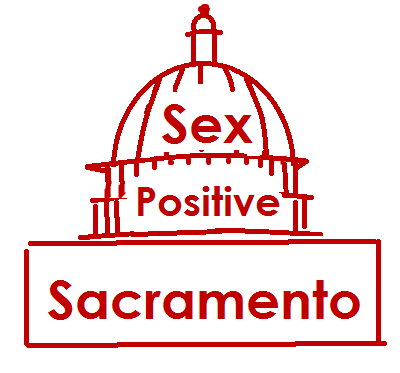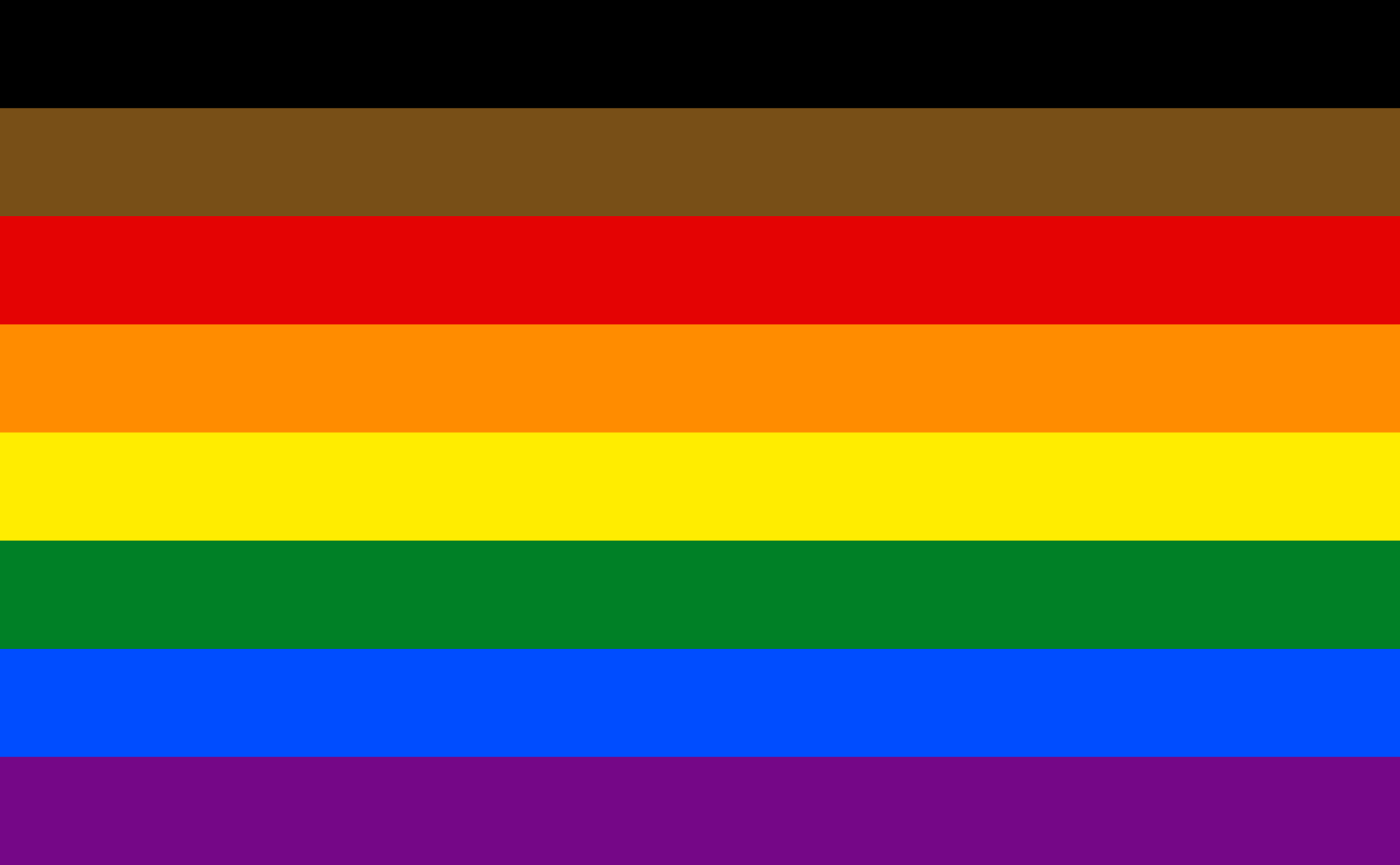By HethreBeth, the Sex Positive Social Worker
Hey Sacramento! June is here, and Pride Month is hot, hot, hot!
You have questions, and we have answers about Pride Month, parades, and festivals.
What is Pride, and why is it in June?
Pride, often called LGBTQ Pride, or historically Gay Pride, is a celebration of the LGBTQ+ community. The word Pride has intentionally been used in opposition to the idea that LGBTQ folks should remain ashamed, and hide or attempt to quash or change ourselves, our relationships, our identities, and how we express ourselves. While “gay” used to be a general term for all LGBTQ folks, we now more frequently say LGBT, LGBTQ+, or queer as more inclusive terms.
In many areas, Pride is celebrated in June to commemorate the Stonewall Riots. For much of American history, there were very few safe public spaces for transgender people, gay men, lesbians, bisexual people, and anyone else who didn't fit into gender or sexuality norms. One of the few places LGBTQ+ people had were gay bars. The Stonewall Inn in New York City was one of these places. The Stonewall Inn, like many gay bars, would often be raided by police, and the patrons would be kicked out, beaten, and arrested. After one such raid on June 28, 1969, Stonewall patrons, led by transgender women of color Marsha P. Johnson and Sylvia Rivera, began resisting the raids, standing up against the brutality of the police officers and oppressive laws and ordinance with direct actions. These actions sparked a national movement, with LGBT rights organizations springing up in cities around the United States. Bisexual activist Brenda Howard and others organized the first Gay Pride march and rally in June, 1970 to commemorate these riots.
Many Pride events have become less connected to the political history of the riots, and more about a celebratory mood and finding community.
What happens at Pride?
Usually there will be a parade, followed by a festival. The festival will usually have kind or more stages with entertainment; food; activities; vendors; and booths from organizations such as social services, support groups, churches and religious organizations schools, GSA/QSA groups, activist groups, businesses, local government, and more.
Who attends Pride?
In short: anyone who doesn't identify as straight, heterosexual, or otherwise normative around gender and/or sexual orientation, and those who support us.
These folks include:
Intersex people, who are neither biologically fully female or male
Transgender folks, including those who identify as agender, genderqueer, genderfluid, non binary, two spirit, and a plethora of others
Others who are gender non conforming, including drag kings, drag queens, Sisters of Perpetual Indulgence, and more
Pansexual, bisexual, sexually fluid, and other people who are sexually attracted to more than one gender
Asexual, aromantic, and other folks who do not experience sexual or romantic attraction in a normative way
Lesbians
Gay men
Anyone who identifies as queer
Service and support providers such as ASL interpreters, care attendants for queer people with disabilities, family members, partners, etc.
Allies to our community
Oh my gosh, why are there SO MANY RAINBOWS?
The rainbow flag was designed by Gilbert Baker in 1978, and originally included hot pink and indigo. However, the most commonly use flag includes red, orange, yellow, green, blue, and purple, with each color representing a different facet or component of our community. Since then, rainbows, and rainbow flags have become a symbol for Pride and the LGBTQ+ community. In 2017, the Philadelphia pride committee added black and brown, to show intentional inclusion of queer people of color.
However, rainbow is not the only flag! Many other flags exist to show pride for the varying identities and expressions of our community, including:
Two spirit pride
Transgender pride
Non-binary pride
Bisexual pride
Pansexual pride
Intersex pride
Polyamory pride
BDSM pride
...and many more!
Are families welcome?
Nowadays, most Pride marches and festivals welcome families and kids. Check out your local event to find out more. Be aware that many Pride festivals serve alcohol.
A great introduction to Pride for kids is the book This Day In June by Gayle E Pitman.
If you decide to attend Pride as a member of the queer community, or as an ally, here are some etiquette tips:
DO cheer for friends, floats, and groups marching in the parade.
DON’T attend pride just to gawk or laugh at people.
DO interact with people at Pride just as you would any other human - in a kind, open, but not creepy way.
DON'T touch people, especially in a sexual way, without consent
DON'T assume you can tell what someone's identity, relational status, preferences are just by looking.
DO visit booths to learn more about services offered by organizations, social groups, local queer-friendly businesses, etc. If you'd at Pride, I am making the assumption that you'd like to be a safe, resourceful person for any LGBTQ+ person in your life. Learning more about these organizations can help you get involved, or just know who to refer a colleague, friend, or loved one when they come out to you.
DON'T out anyone you run into by sharing that you saw them at Pride when you are back at work/church/school, etc., if you are not 100% certain that they are okay with everyone around knowing this. They may not be out (even as an ally) with work, church, school, family or friends. Everyone gets to share details about their own lives when and how they are comfortable. This is a matter of both respect and safety!
DO have a great time! Stay safe and healthy by drinking lots of water, using sunscreen, and staying cool in the heat; bring and BE a safe person for other queer people. It is a party, but it is also a safe space for queer folks.
DO keep the spirit of Pride - remembering it was originally a protest against injustice - with you and stand up for LGBTQ+ rights the other 364 days of the year!
Learn more about our history, get acquainted with local and national resources:
https://www.hrc.org/blog/lgbt-history-month-the-1950s-and-the-roots-of-lgbt-politics
https://www.glaad.org/blog/timeline-look-back-history-transgender-visibility
https://www.ranker.com/list/transgender-people-in-history/devon-ashby
https://transequality.org/history
https://www.glsen.org/article/lgbtq-history-1
https://www.pride.com/netflix/2016/8/23/22-awesome-lgbt-documentaries-you-need-watch-netflix#slide-1
http://www.pbs.org/independentlens/films/two-spirits/
https://www.glaad.org/blog/us-bisexual-movement-biweek-history-lesson
https://www.cnn.com/2015/06/19/us/lgbt-rights-milestones-fast-facts/index.html
https://www.amazon.com/Fading-Scars-Queer-Disability-History/dp/0986183512
https://www.reclapress.com/books/corbett-joan-otoole/
https://en.wikipedia.org/wiki/Timeline_of_intersex_history
Happy Pride month!

